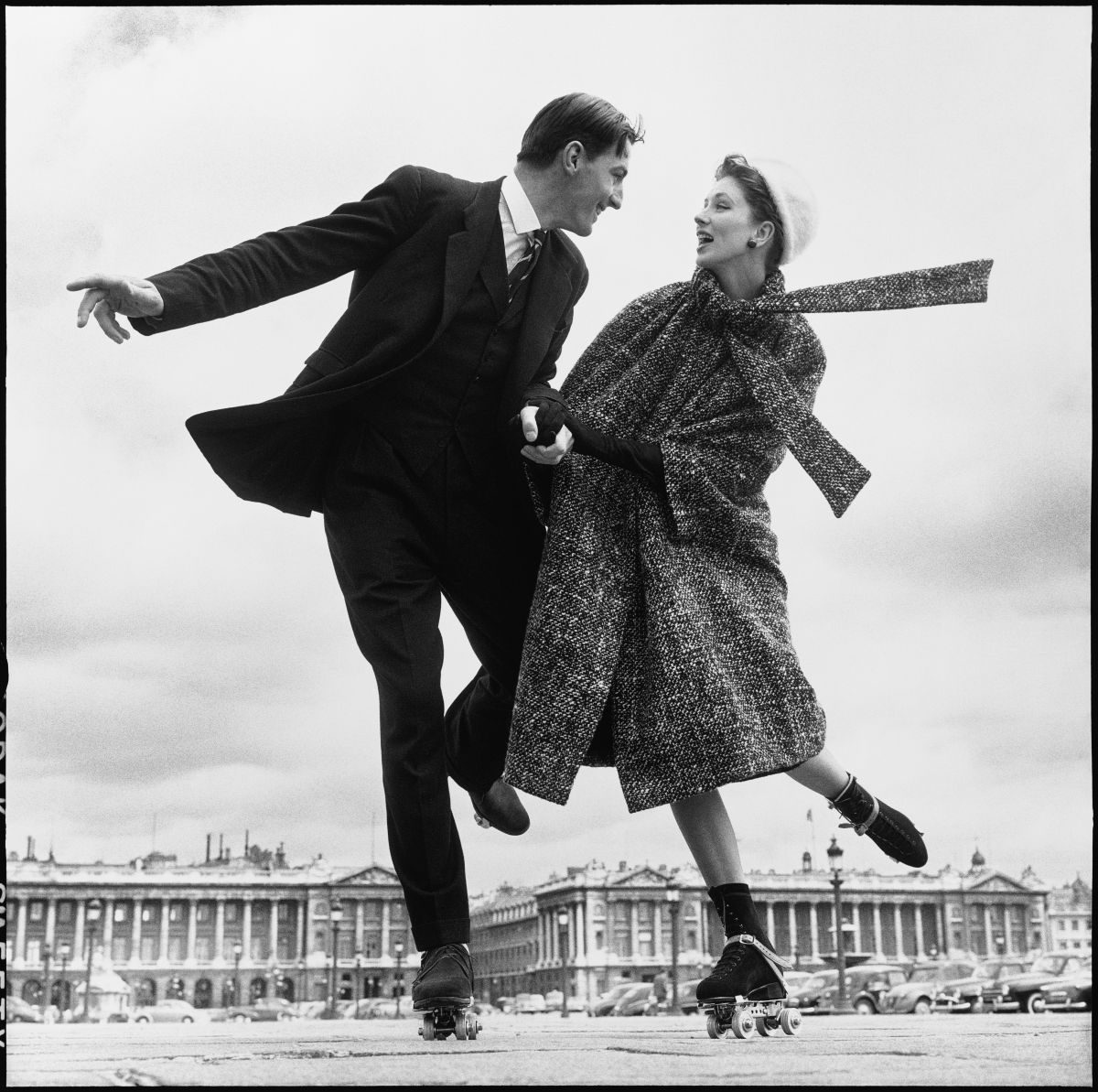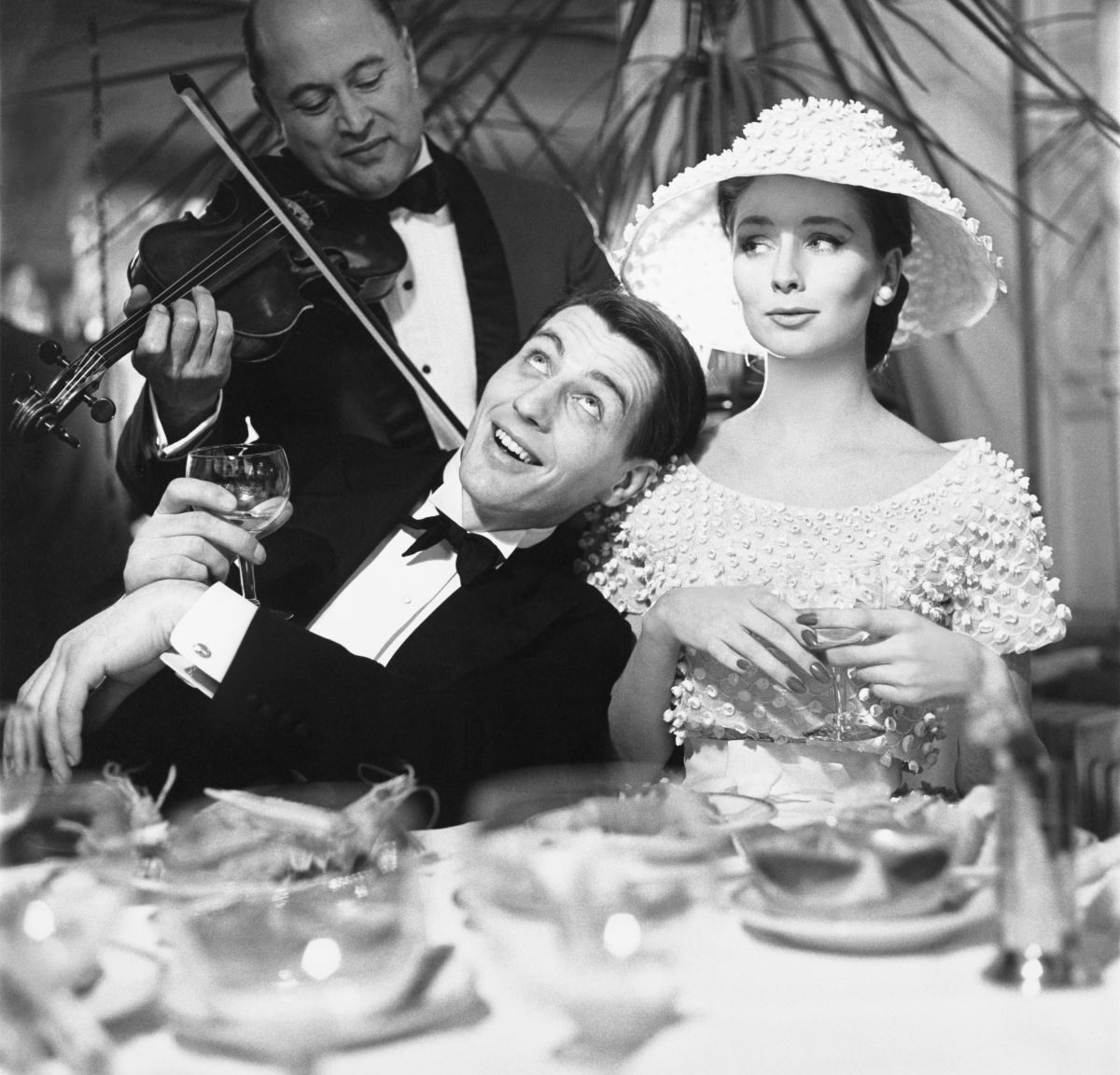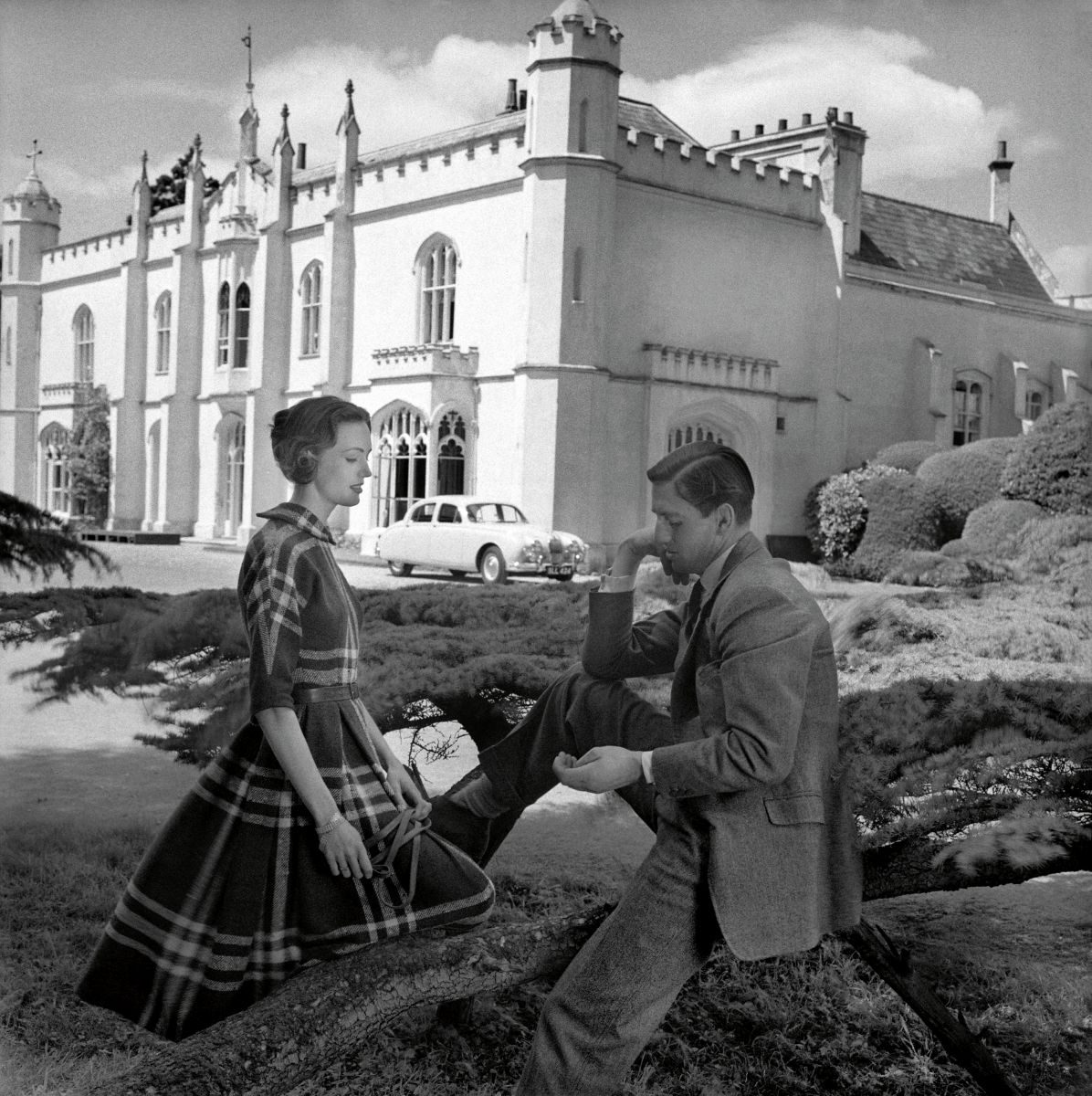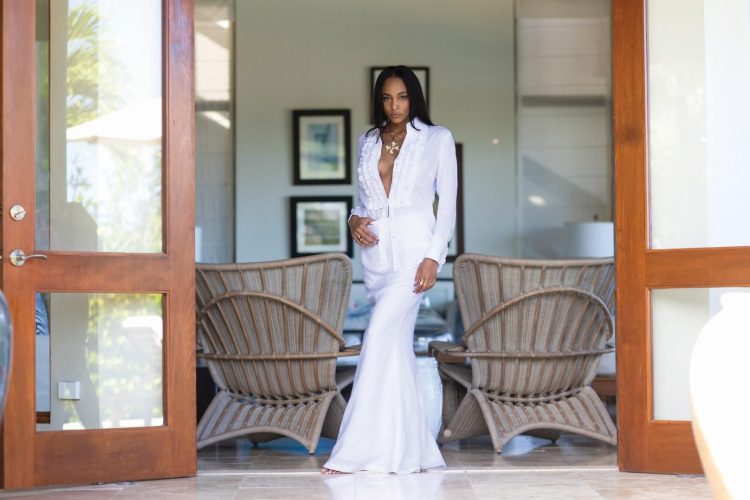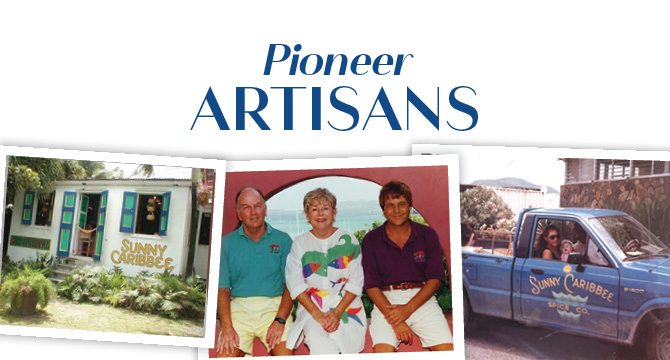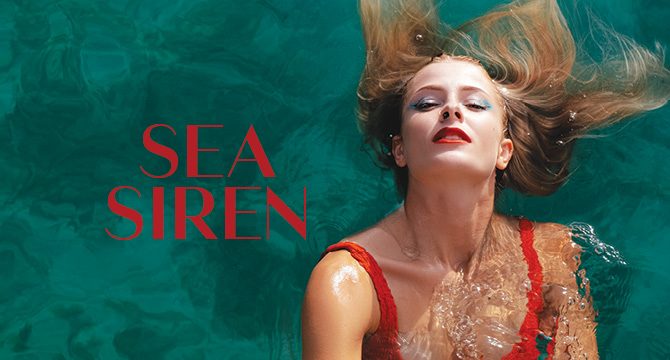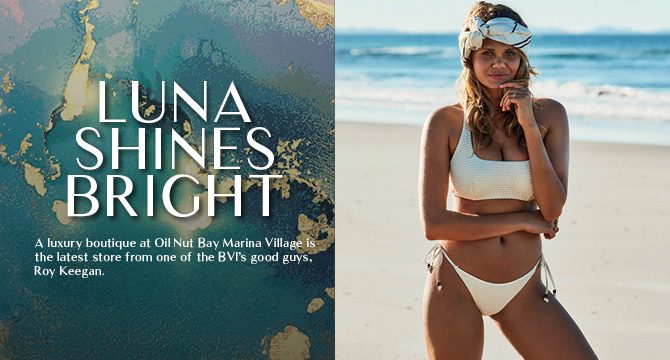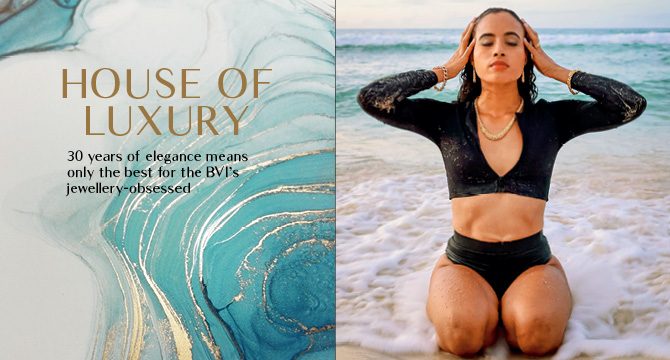Meet the BVI’s own one-time international super model and surgeon Dr Robin Tattersall, in part one of our two part series on his life.
By Erin Paviour-Smith with Dr Robin Tattersall.
Claire Shefchik also contributed to this piece
In front of the Place de la Concorde, the roller-skating figures are romantic. The man and woman are clearly in motion, their limbs at odd angles, looking only at each other. On her face, a look of sensual surprise. On his, a sort of robust joy. Even in a moment of whimsy, he’s at the helm. It’s no shock to learn the same man–at one time the world’s highest-paid male model–was also an Olympic yachtsman, and a surgeon who once saved lives with whatever tools he could find.
Dr Robin Tattersall, OBE, is 91-years old and as tall and handsome as ever. He lives in a house surrounded by fruit trees, where he will pour you a strong Planters Punch, precisely when the sun turns red and disappears over the horizon.
The sixpenny piece
Manchester-born, as a six-year-old, Robin had double pneumonia and crooked legs, so he was all too familiar with doctors. One day a maiden aunt visited and asked what he would like to be when he grew up? With the physician having just walked out the door, without thinking Robin replied “a doctor” and was rewarded with a sixpenny piece. Robin realised he was onto a good thing. From that moment on, his parents would proudly say to all “Little Robin wants to be a doctor!”
In order to avoid the anticipated bombing in his home town, Robin spent the first three years of the World War II in the small Welsh village of Abersoch: the only English boy at a totally Welsh-speaking school. He then returned to attend Manchester Grammar School in 1942, where in anticipation of studying medicine, he rose up through the science side. However, there his main preoccupation was playing rugby, ending up as the captain of the first XV, and sailing in the summer … not to mention the girls!
Only the other ranks live in South Lancashire
In those days national service in the army was mandatory for 18-months. After basic training was completed, Robin was chosen to be interviewed with the possibility of obtaining a commission. He attended a War Office Selection Board (“WOSBY”) where 16 candidates were rigorously assessed for their suitability to being an officer. Personally, Robin felt that almost all the others were more appropriate than himself. However, the final challenge was to give a 10-minute talk on a subject of one’s own choosing.
Naturally, Robin was only prepared to speak about sailing, but when it was the turn of the fellow before, disaster struck. He took the wind right out of Robin’s sails by choosing the same subject. “I’m finished” thought Robin. To talk about the same subject now would be suicide.
This was a pivotal moment in Robin’s life. He remembered that he had recently (with his mother) attended a lecture on ghosts given by Professor Joad, an English philosopher and broadcasting personality who was also a regular member of The Brains Trust, a BBC Radio discussion programme in the 1940s and 50s.
This fascinating talkwas still fresh in Robin’s mind, so standing there in front of his peers, he was able to recall and deliver a perfect 10-minute synopsis on ghosts, which of course stole the show and ensured that he was one of the only two in the group who were successful and advanced to the officer cadet training school.
Although he had requested to join the Gordon Highlanders, the regiment in which his maternal grandfather had served, to his disappointment he was commissioned into the South Lancashire regiment, because their base was close to his home.
He joined their active battalion, which was stationed in Trieste, a special zone where the regiment patrolled the border with Yugoslavia at the southern end of the “Iron Curtain”, as Tito was still allied
with Stalin.
At dinner on the first night in the officer’s mess, with everyone turned out in their finery, the colonel welcomed Robin, asking where he came from. When he heard, he shouted “Good God, what’s the world coming to! Only the other ranks live in South Lancashire! Our officers all come from south of the Thames!”
Ikey Tenen
After a year in Trieste as second lieutenant, it was time for Robin to start at Pembroke College where he had been assured a place. But there was one critical hurdle: he still had to pass a special Latin exam required in those days for entrance into Oxford and Cambridge.
Robin had sat for it twice before and failed. He had one last chance to pass the exam, which was to be just a week before the beginning of term. His old Latin teacher, a tall Jewish man named Ikey Tenen, was his only hope: he agreed to tutor him in the summer months leading up to it. One piece of Latin prose which they had studied was so hard to decipher that even Ikey had trouble. But as luck would have it, when Robin sat the exam and was given a choice of questions, one of them was to translate that very same prose.
Just like he had done during his 10-minute lecture at WOSBY, Robin reeled it off and happily avoided the disappointment of having his name removed from the already mounted plaque outside his room at Pembroke.
True to form, Robin spent most of his time on the rugby field or in the evening at the renowned local pub “The Eagle” where one Saturday night on February 28, 1953, Francis Crick burst in and announced he, along with James Watson had discovered the secret of life – “the double helix!”
After three years, Robin went on to graduate from Pembroke with a degree in natural sciences and continued his clinical studies at St. George’s Hospital Medical School before qualifying as a doctor.
Cigars, port and brandy
One night at a black-tie dinner party, Martin Stephens (who was in public relations, making sure the right people, including Winston Churchill, smoked the cigars and drank the brandy and port that he represented) suggested Robin should try modelling. He gave Robin the name of a theatrical agency (who also represented such people as Roger Moore, before he became 007).

In the countryside wearing a blue hopsack tweed skirt suit by Dorville with a tartan deerstalker hat from Cogswell & Harrison. Published in British Vogue, September 1956;
Robin and first wife Jill were on the way home in the car. She asked what was discussed between the gentlemen after the ladies had retired (as they did in those days). Upon hearing what Martin had suggested, she was encouraging. “But I had just got into the first XV at one of London’s top rugby clubs. What would the boys say? Back then, male models were almost all out-of-work gay actors,” says Robin. When they appeared at all, they were not much more than accessories to the females.
Robin soon landed his first modelling job: the launch of The Waistcoat Club. This was the brainchild of actor Peter Ustinov and Gilbert Harding, who both had a passion for fancy waistcoats, which were so much part of men’s fashion in centuries gone by. The two of them, plus Robin, modelled an array of waistcoats through the ages at The Chez Auguste restaurant in Soho.
A second live show followed, with the opening of the spring collections of Moygashel, the Irish linen brand, held in the ballroom of the Dorchester Hotel on Park Lane–just across the park from St. George’s Hospital which was then at Hyde Park Corner.
There were at least twelve female models plus Robin (much to his delight). Paired to open the show with Barbara Goalen, the doyenne of live modelling at the time, she was dressed all in white and he in black as they swept down the catwalk together. Barbara Goalen took the younger Robin under her wing and introduced him to some of London’s top photographers and the modelling assignments flowed.
Monsieur Avedon might like to see you
Twice a year all the top female models would go to Paris for the collections, returning with pockets full of gold. In 1956, somewhat envious of this, Robin decided to try it out for himself. “I thought, well, it’s women’s fashion, but they just might need some guy in the background,” he says.
He travelled to Paris in his beloved 1926 Humber 12/25 Open Tourer and went straight to the offices of Harper’s Bazaar. “I was wearing a very smart Savile Row suit, with all the accessories, bowler hat, gold watch and chain in my waistcoat, which in the current fashion, had lapels on it.”
“The French manager said, ‘Monsieur Avedon might like to see you.’ I knew who Richard Avedon was but had no idea what he looked like.”
When he appeared, Robin initially thought he was the photographer’s assistant. Avedon, then the world’s number one fashion photographer, looked very young. “He peered at me and then went into the dressing room and dragged out this gorgeous, red-headed beauty and says, “this is Suzy; take her in your arms”.
“It wasn’t long since I’d been in the army. I knew how to obey an order!”
After staring at us for a few moments, he said “We’re off”.
Without any further ado, the couple were whisked away to the Place de la Concorde.
“What I didn’t realise until later that day was that Avedon was going to use these collections to launch a major change in fashion photography. Previously they had been mostly stylised, static studio shots, but Avedon wished to present the collections with active ‘boy-girl’ situations.
There was one problem: Avedon had already lined up a Hollywood actor named Gardner McKay to star with Suzy Parker, at that time the world’s number-one model. Gardner, a New York socialite and sculptor who would later go on to star in the South Pacific-set TV series Adventures in Paradise, was to be Suzy’s male foil.
“Only a few minutes before I appeared, and when Suzy was already dressed in the first Dior coat to photograph, Avedon had received a cable from Gardner to inform him that he would be six days late, with a good reason: the worst post-war maritime disaster had occurred that day”.
In 1956, before commercial trans-Atlantic flights, the actor had been outbound from New York on the Isle de France at the same time that the Swedish liner Stockholm had in dense fog off Nantucket rammed and sank the Andrea Doria, queen of the Italian fleet.
The Isle de France immediately responded to the SOS and reversed course to pick up the survivors from the sinking ship and return them to New York. “Hence Gardner had the perfect excuse,” says Robin. “But the show had to go on, and as if by magic at that point, I appeared. I was the same height as Gardner and was immaculately dressed.”
Fashion in movement
It was settled, then. The med student had to learn to roller-skate. “I was not aware that we were going to do the shoot on skates until we got there. Suzy, of course, was an excellent skater, but I hadn’t skated since I was a child and was quite hopeless. I said, ‘You’ll have to get somebody else!’”
Avedon wouldn’t take no for an answer and said “Let’s cut for two hours and you can go off and learn how to do it.”
“You can imagine how I felt, at six feet three inches tall in my Savile Row suit, trying to find a quiet back street in the middle of Paris on which I could practice with little kids coming out and laughing at me.”
Robin returned to the Place de la Concorde and told Avedon that he still couldn’t do it. As a demonstration of Avedon’s creative genius and sheer will to get the right result, he decided the photos would be staged with wires attached to Robin and Suzy’s clothing to spread it out and give the illusion of movement.
With this visual trickery, the image was a smash; an iconic one still poured over in serious photography courses on “fashion in movement”. This ensured the good doctor’s place in the halls of haute couture.
Even after Gardner finally arrived, Robin had already stolen the show as the year’s breakout star. When the issue of Harper’s Bazaar was published a couple of months later, it assured his place as the top international male model.
As a trainee surgeon, Robin needed to earn extra money so he could take a few months off to study for the FRCS exam. He contacted Avedon, who said there would be opportunities if he came to New York. So Robin flew there, which coincidentally was the day John F. Kennedy was elected and left the day he was inaugurated.
He boarded in a little brownstone on East 53rd Street with explorer Quentin Keynes, the great-grandson of Charles Darwin and nephew of the world-famous English economist John Maynard Keynes. At the frequent cocktail parties Quentin gave, Robin met many interesting personalities including David Ormsby-Gore, at that time the UK Ambassador to the United Nations and even Eleanor Roosevelt, with whom he remembers having a very interesting conversation.
At that time in New York, the top female models were getting $75 an hour, whereas the top men only $55. So Robin thought that as he had just arrived, his rate should probably only be $45 to which model agency owners, Eileen and Jerry Ford responded: “No! For you, we will charge $65 so you will be the highest paid male model in the world, and therefore never stop working!”
This, combined with the legacy of the Paris Collections, ensured him all the money he needed to complete his studies, and after returning home to England, Robin never worked again as a model.
Robin’s fascinating story continues in our May/June issue.

